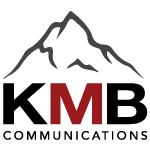Consumers need to know what makes your offering unique, different, and better than what they see in headlines or on social media.
While residential technology offerings continue to expand and evolve at a blazing pace, so too is consumer confusion. Throughout January, headlines will excitedly announce the next best thing being introduced at CES, and retailers will jump on the promotional bandwagon to capture people’s attention, convincing them that they have got the newest and best tech products for the home. This happens every year, of course, but in 2024, I strongly feel that our industry needs to take a more aggressive and proactive approach to leverage this broad-based momentum to pull people into our world, where integration pros can deliver an exceptional tech experience based on the actual needs of the residence.

As an industry, we need to shift the focus and create a more compelling narrative — and we need to do it fast. The media buzz in January creates a swarm of stories that suggest the latest tech shown at CES is the only way to go. It creates information overload, for sure, but this can also be a very lucrative time to promote your services and capture new prospects. However, you will get the most traction if you use similar and simple language to pull people away from the hype and introduce them to your business. Use clear language and you can easily convert them, I assure you. How can I be so sure? Because very few people seek out or search for products using complicated terms, acronyms, or industry jargon. Hence, I encourage associations, integration firms, and industry professionals to take the opportunity right now to change the narrative.
Share what the mainstream media publishes from CES and shift the perspective to show how the products being talked about are similar to — or the same as — the ones offered in our channel. Take time to expand on what happens when the types of products being promoted are professionally integrated into the home, and how this ensures not only full functionality, but also privacy, security, and ongoing support when updates or service are needed. I may sound like a broken record again but without our collective efforts conveying this message, the future of our channel is in dire jeopardy.
I’m bringing this up not only because it’s CES time but also because I was recently catching up with colleagues from the interior design world and the wine and specialty food industry about the challenges their communities are facing. A common concern for all — and one that resonated deeply with me — is the dramatic impact of free design services and heavily discounted products made possible by large-volume purchasing abilities that smaller firms simply can’t afford to offer. This isn’t new, but it is taking more business than many will admit to. It was a fascinating (and eye-opening) conversation that led me to question if, as an industry, we are effectively educating consumers about how what we offer and do is differentiated and therefore better, or if we are only serving to further dilute things. I fear it’s the latter, and we need to shift the focus.
Take Sonos, for instance. While some still have concerns about the brand and others like it being prominently offered in our channel, what Sonos has done to increase awareness by consumers of the fun one can have with speakers in their home or anywhere they roam is remarkable. What we need to do is harness that energy and create a dialog that’s more meaningful to consumers and opens their eyes to intentionally adding tech and services that truly fulfill the needs of the home and better prepare it for the future. This is what I mean by showcasing your company’s differentiation. By drawing attention to what’s being promoted in the mainstream and stating in clear, concise statements how your firm can provide a better — and safer — tech experience, consumers will see there is a better decision to be made than what the headlines suggest.
Here’s a scenario to consider. I love what Sonos offers in terms of portability in my office, kitchen, Zen room, and wherever I go outdoors, but I enjoy the sound quality of my Meridian speakers for movie watching much, much more. Our system isn’t overly complex, but required an integrator to install and we rely on them for ongoing service and support, which I have no problem with because we enjoy what we have and never have to worry about outages or updates. Better yet, when it’s time to upgrade, I know they’ll have my back on that, too. How do I know this? Because they share what’s new in digestible terms, communicate consistently, and offer me no reason to think that what they suggest might not be the best for my situation. That’s the differentiated approach I’m talking about that not only wins customers, but keeps them coming back. Please, give it a try. Together, we can and need to raise greater awareness of what makes the custom installation channel unique and that the work we do is important.
As a communicator and brand strategist, I work diligently to identify and communicate brand differentiators. If you need help getting off-center, drop me a line. I’m here to help!
Original article can be found here: https://www.residentialsystems.com/features/secrets-of-success/dont-hesitate-to-differentiate
—
A 25+ veteran of the residential tech & AV integration industries, Katye McGregor Bennett is the CEO of KMB Communications, a boutique communications firm that anchors the intersection of technology + design by connecting brands, buyers, and prospective audiences through creating compelling content and conversation that elevates and amplifies. In addition to co-hosting Design Uncut with Veronika Miller, Katye hosts two popular podcasts, Connecting Tech+ Design and AV Trade Talk. She is part of the DesignHounds influencer group and also serves on the NAHB Custom Technology Work Group, is a strategic advisor in the CEDIA, HTA, and AVIXA communities, a frequent contributor to Residential Systems, Connected Design and founder of the AV Yoga group.

